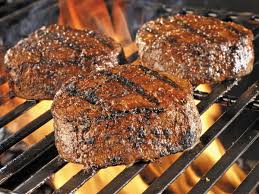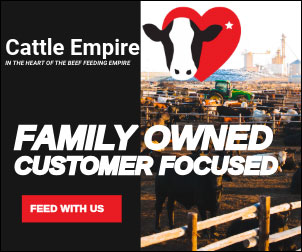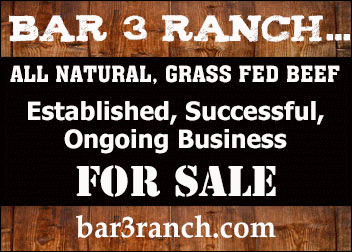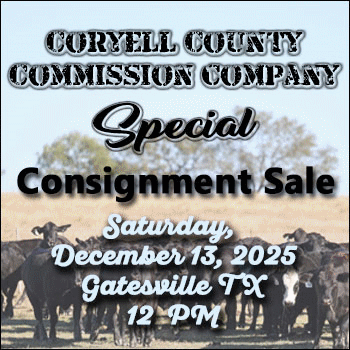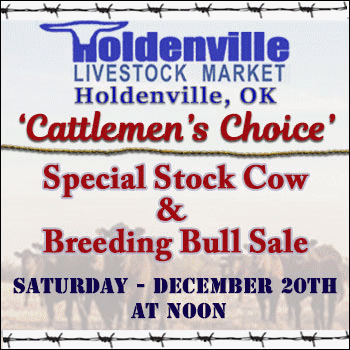Wall Street Journal
Ranchers are shrinking cattle herds because of drought and high costs, cutting down the nation’s supply of beef. That threatens to push prices for steaks and burgers to records.
Hamburgers and steaks, already near record-level prices, are set to get more expensive.
The culprit is a rapidly shrinking supply of cattle. Years of persistent drought conditions, which make cattle more expensive to raise, pandemic disruptions and widespread cost increases have prompted ranchers to sell off livestock, bringing the number of cattle in the U.S. to its lowest level in nearly a decade. U.S. beef production is on track to drop by more than 2 billion pounds in 2024, the biggest annual decline since 1979, according to Agriculture Department data.
With costs rising for nearly every aspect of raising cattle, ranchers say they are running out of reasons to replace the livestock they send to slaughter, let alone enlarge their herds. “We’re spending $1 million to make $4,000,” said Ryan Stromberger, a rancher in southwest Nebraska just outside the city of Ogallala who also has two feedlots.
With less beef available, consumers shouldn’t expect lower grocery bills for now. Prices for ground beef, up more than 20% since 2020, could hit record highs this summer during peak grilling season and an estimated average retail price of $5.33 a pound this year, according to analysts at agricultural lender Rabobank. Prices could add at least another 15 to 25 cents in 2024, the analysts said.
Some diners are choosing different cuts, or only picking up beef once in a while.

On a recent shopping trip to a Mariano’s grocery store in Chicago, 44-year-old Jeff Espiritu opted for on-sale chuck roast for his stir fry, rather than a more expensive cut. He said he has been buying more pork, and looking for sales on beef. “Even the sale prices are still high,” Espiritu said.
The prices are testing America’s appetite for beef, which has continued to grow despite years of health discussions, a focus on the climate impact of raising cattle and the greater availability of plant-based proteins, according to grocery store executives.
“There is no doubt when you get beef to a certain price, people change behavior,” said Kroger chief executive Rodney McMullen. When steaks begin to reach a certain price they could become a special occasion item, he said, rather than something they may have once a week.
‘Taking a toll’
A rancher typically raises calves and sells them at an auction to a feedlot. Feedlots fatten the cattle and sell them to meatpacking companies, which slaughter the livestock and sell the meat to food companies, retailers or restaurants. A disruption in one part of the supply chain can throw the whole system off.
In early 2020, meatpackers temporarily shut plants when tens of thousands of workers fell sick during the Covid-19 pandemic. Daily capacity at U.S. cattle and hog facilities temporarily declined as much as 45%, according to the USDA. Over the next year, meatpackers said they had a hard time recruiting enough workers to fully run their plants.
Ranchers held on to cattle, adding to costs to keep them longer than usual. When they could get their cattle in to meat processors, they got less for the animals amid the excess supply, meatpackers said.
At the consumer end of the chain, beef prices climbed to record highs as the processors couldn’t supply enough to stock shelves, meat companies said.
Last year, the supply of beef rebounded as industry staffing levels began to improve. Meat companies offered workers higher pay and other benefits while automating more parts of their plants.
Cattle prices improved for ranchers, but by then inflation pushed up prices for fuel, feed and equipment. Severe drought in many key cattle-producing states, such as Nebraska, Oklahoma and Texas, parched grazing pastures, requiring spending on supplemental feed such as alfalfa and hay—which are up more than 20% on average from the prior year, ranchers and beef industry officials said.
Ranchers in wetter areas of the country are faring better, and feedlots had their most profitable month in April since April 2017, according to estimates from Iowa State University. But Nebraska, Kansas, Oklahoma and Texas are still experiencing some drought, driving feed prices higher and limiting profitability. Better weather conditions over this summer could lead some ranchers to retain more of their animals.
Pork producers, in contrast, have been expanding supply in recent years, and now see a glut in the face of weaker consumer demand. Chicken is America’s most consumed protein, but the value of the beef market is double that of chicken, at more than $30 billion for the 52 weeks that ended April 23, according to Circana. And neither pork nor chicken are hit as hard by the drought.
Stromberger, the Nebraska rancher, said he was making only about $20 profit per head of cattle earlier this year. As cattle prices have risen, he is now making about $80 a head. The profit is nowhere near the $500 to $600 he was making around 2014, the last time cattle herds were on the decline. High costs have cut into his profits.
He said he is paying more for everything from the medicine and vitamins needed to keep his cattle healthy to labor, farm equipment and higher interest rates. “The cost of what we’re doing is taking a toll,” he said.
Ranchers in areas with drought, including in Nebraska, above, Kansas, Oklahoma and Texas, often have extra costs for feed.
Thinner herds
As costs on the farm rise, some ranchers are choosing to shrink their herds. It’s a weighty bet, because when the landscape reverses, it’s a slow process to rebuild: It takes roughly 18 to 22 months to grow beef cattle to market weight, compared with chickens, which are ready to be slaughtered in six weeks, and hogs, in about six months.
The total U.S. cattle supply, which includes dairy cattle, this year is at about 89.3 million, down 3% from 2022, according to the USDA’s annual cattle report released in January. The number of cows that are used for breeding beef cattle are at their lowest level in six decades.
Beef production is expected to fall more than 5% from last year, the first year-over-year drop since 2015, according to the USDA’s forecast.
A single animal can cost ranchers about $700 or more in operating costs until it’s sold to a feedlot—where each brought in just $12 of profit on average in 2022, according to the USDA.
Lisa Roberts, a rancher with more than 200 mother cows between her ranch in Shiner, Texas, and another one 30 miles away, said the wells and the creek near her properties, the primary water sources for her livestock, haven’t gone dry yet but many of her neighbors haven’t been as fortunate. The lines at the sale barn for ranchers selling off their herds last summer were as long as she has seen in years. “Some people got tired of the hassle and got out of the business,” she said. “For the average cattle raiser, it’s a break-even business.”
In 2022, she sold 157 calves and seven cows on one of her ranches to a feedlot for about $115,000. She spent about $90,000 on operating costs, netting her $25,000, which doesn’t include buying any animals or doing barn repairs. That put her in the red in 2021.
Some ranchers also take on a significant amount of debt to finance their operations, which could be more expensive with higher interest rates, analysts said.
Feeling it at Shake Shack
Restaurants including Olive Garden owner Darden Restaurants, Ruth’s Chris Steak House, LongHorn Steakhouse and Portillo’s have said they expect pricier beef to drive up their costs over the next year.
Katherine Fogertey, finance chief of burger chain Shake Shack, told analysts in May: “If you’re asking me where the biggest part of uncertainty is on the cost side, to me it’s beef.”
As ranchers trim herds, meatpackers, such as Tyson Foods, Cargill, JBS, and National Beef, which process roughly 85% of beef in the U.S., are having to pay higher prices to secure enough beef to meet the demand of their grocery store and restaurant customers. Live cattle futures—reflecting prices that processors pay for cattle—have been hitting record high levels on the Chicago Mercantile Exchange in recent weeks.
Tom Windish, who oversees Cargill’s beef division, said cattle herds are expected to decline over the next two to three years, putting additional pressure on meatpacking companies like his.
“When you’re talking about the ultimate price of beef to a consumer, the whole chain is under these inflationary pressures,” said Windish. “Every step along the way is more expensive.”
Beef processing profit margins in the U.S. were about 57% lower in April from a year ago, according to investment firm Stephens. Brazil-based JBS, the world’s largest meat company, reported a quarterly loss of $290 million in May.
Tyson, the largest U.S. meat supplier, said operating income from its beef unit fell to $166 million for the first six months of its 2023 fiscal year from $1.59 billion in the prior year’s first half. The company’s stock is down more than 40% over the past 12 months.
At Wisconsin-based supermarket Festival Foods, Ken Wicker said more consumers are opting to buy sirloins over pricier rib-eyes. Some consumers are choosing to buy more seafood over more expensive steaks, or ground turkey compared with ground beef, said Wicker, the company’s senior vice president of fresh foods.
If beef prices continue to rise, he said the grocery chain could shrink the amount of meat in an individual package to reduce sticker shock of certain cuts.
Midwest grocery chain Fareway Stores could turn to offering a free pack of hamburger buns when it sells eight ground beef patties, said Jeff Cook, vice president of market operations. The amount of chicken Fareway is selling is up, especially with the lower poultry prices that kicked in last year amid increased production. Cook said consumers really began to trade down to lower-priced chicken in late 2022 and early 2023.
David Benowitz, president of Craft and Crew Hospitality, said the Wayzata, Minn., restaurant operator recently agreed to a deal to secure 200,000 pounds of beef at a set price that will go toward supplying its menus of steak bowls, burgers and its popular French dip sandwich. It’s a shift from the smaller purchases he has made in the past, and not common among smaller restaurant groups, but he said he hopes it will mitigate rising costs.
“Meat prices have been very volatile from month to month,” Benowitz said about why the company entered into the contract. “We have forecasted ahead for higher beef prices.”
Benowitz said the company, which has six locations in the Twin Cities area, will likely have to renegotiate the deal when its restaurants use up their current beef allotment.
There’s a limit to how much the company can raise prices, given its customer base of neighborhood regulars, he said: “If it gets too high, you look at putting other dishes on the menu.”
